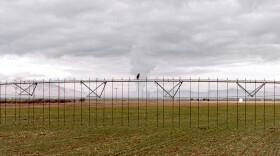-
Potash and phosphate are now on the 2025 critical minerals list.
-
Wyoming lawmakers wonder if more fuel management on ranches will help in the face of high insurance costs.
-
Farmers in Wyoming and across the U.S. face many stressors and they have one of the highest rates of suicide of any occupation. Behavioral health care providers are now being taught a new method to identify depression, anxiety and other issues among farmers.
-
Gordon said a working group will present a strategy for investments in education, applied research, and innovative farm and ranch management.
-
A majority of farms in the United States are considered small, and Nevada is no different. Many provide food right back to the local community. But it's becoming increasingly more difficult for them to survive. That's the case for one family-operated farm in Fallon.
-
A new approach to addressing water scarcity is underway — one that turns farmland into projects that benefit both people and the environment. Researchers say parched Mountain West states could learn from it.
-
This Casper urban farm expected an AmeriCorps NCCC team. When NCCC disbanded, the community found a way to get one anyway.
-
Over 300,000 visas were issued last year to foreign farmworkers – a fraction of what the agriculture industry needs for its labor force. That guest worker program is getting new scrutiny from labor and industry critics who have long wanted to overhaul it.
-
New research shows high levels of a toxic byproduct linked to cancer and other health problems polluting drinking water across the U.S., including parts of the Mountain West. One of the main causes is manure runoff from livestock farms.
-
The grant program provided funding to buy food from small-scale producers and distribute it to folks in need across the state.
© 2026 Wyoming Public Media
800-729-5897 | 307-766-4240
Wyoming Public Media is a service of the University of Wyoming
800-729-5897 | 307-766-4240
Wyoming Public Media is a service of the University of Wyoming

Play Live Radio
Next Up:
0:00
0:00
Available On Air Stations










